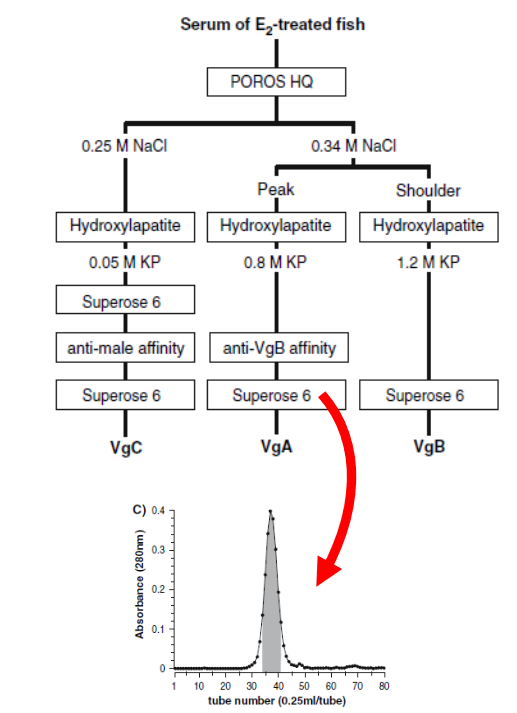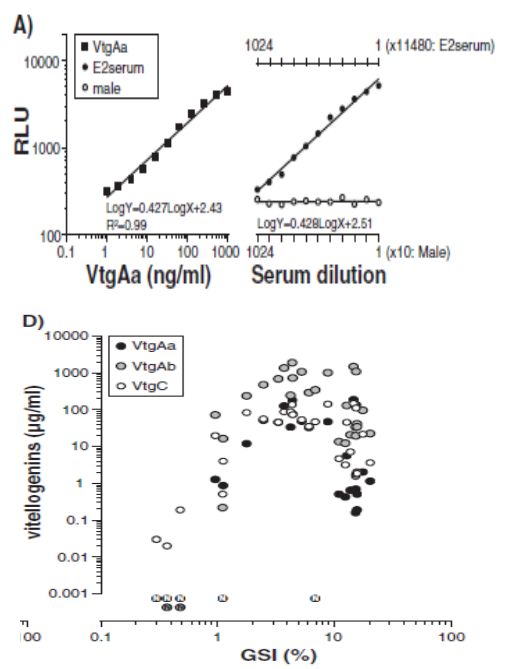Hypothalamus-pituitary
system: The hypothalamus is a part of the
diencephalon and is located above the pituitary gland and functions as the
center of the autonomic nervous system, as well as regulating pituitary gland
function. Neurosecretory cells that secrete neurohormones are present in the
hypothalamus, and the neurosecretory cell axons of teleosts
enter the pituitary gland and regulate pituitary hormone secretion. In the
pituitary gland, various protein hormones (such as growth hormone, prolactin, somatolactin,
melanophore-stimulating hormone, thyroid-stimulating hormone, gonadotropin, and
adrenocorticotropic hormone) are synthesized, released into the blood, and act
on target organs (eg,
gonadotropin → gonad) at the periphery.
Ovary,
follicle, oocyte: The
gonads of the female fish are called ovaries, and are often paired left and
right, and are suspended from the wall of the back body cavity by the
mesovarium. The inside of the ovary is composed of ovarious
lamellas, where numerous follicles are present. Follicles consist of follicular
tissue and oocytes. The oocyte undergoes ovulation through the egg growth and
maturation phases to become an egg, which leads to fertilization with
spermatozoa.
Sex
steroid hormones: The
gonads produce a variety of hormones, including sex steroid hormones. Sex
steroid hormones are synthesized using cholesterol as precursors. Those
produced in the ovaries are called female hormones (estrogens and progestins),
and those produced in the testes are called male hormones (androgens). In a
narrow sense, the estrogen is sometimes synonymous with the female hormone. A
typical fish estrogen is estradiol 17β (abbreviated as E2), which acts on the
female liver to promote the synthesis of vitellogenin, a yolk protein
precursor.
See reference for further details


